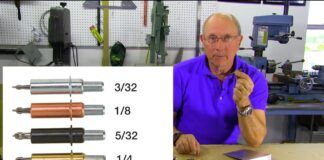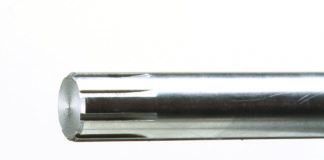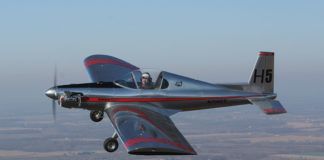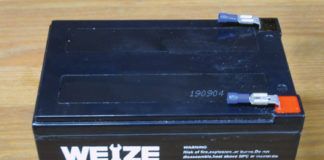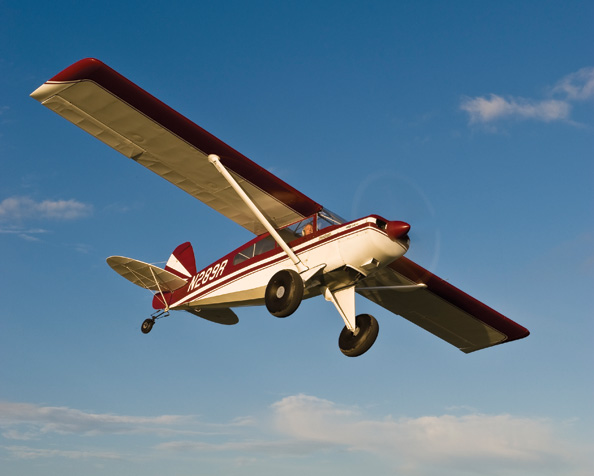
If your memory serves you well, you’ll recall that this little brother to the Bearhawk arrived as a plansbuilt design in 2003. From the fertile mind of Bob Barrows, who penned the four-place Bearhawk utility aircraft, the Patrol borrows many of the original Bearhawk design points such as an innate ruggedness, steel-tube main cage, metal-skin wings and single struts.
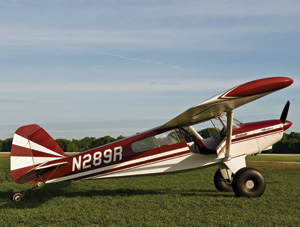
The Patrol looks a little bit Cub, a little bit Husky, but also pretty unconventional with that all-metal, flush-riveted, single-strut wing.
In general terms, the Patrol is a two-place, tandem-seat aircraft in the mold of the Piper Super Cub. Intended to carry a wide range of four-cylinder engines—from a Lycoming O-235 all the way to an IO-390 (115 to 210 horsepower).
What really sets the Patrol apart from the Cub-alikes is the design and construction of its single-strut-braced wing, which uses an airfoil quite advanced from the 1940s-era shapes favored by the Piper-like designs.
New to You
For the last 11 years, the Bearhawk, formerly a plansbuilt-only design, has been available as a kit, and now the Patrol follows suit. Bearhawk Aircraft (nee AviPro Aircraft) is currently offering two main stages of the Patrol kit, differing in the completeness of the fuselage. The base version, which has all the structural welding complete, requires welding of nonstructural components such as tabs and spacers. It’s unpainted, but saves $6000 off the alternative, which is a fully complete cage that’s been fully welded, epoxy primed and painted. So your choices are Basic QB Kit at $30,825 or the Deluxe QB Kit (with the aforementioned welding and painting completed) at $36,825.
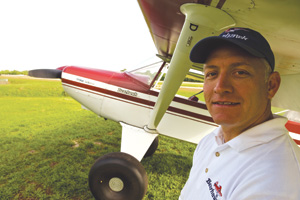
Bearhawk Aircraft’s (nee AviPro) Keith Vasey is the man driving the kit development and production of the Patrol.
The wing kit comes one way: remarkably complete. All of the structural members arrive in place with the leading-edge and upper wingskins already flush-riveted in place. The lower skins are left loose so that the builder can install the control and fuel systems, but all of the rivet holes are located, drilled and countersunk. (Yes, the wing is flush riveted, a rare treat in a utility airplane.) As with most designs, the builder is responsible for providing the engine, prop, avionics, wiring, interior and paint—plus the covering system. Bearhawk doesn’t have a specific recommendation for covering, though Keith Vasey says that builders of the Bearhawk (similar construction) have been using PolyFiber or the new Stewart systems; the latter, he says, appeals to builders who want to use a water-based, non-toxic system.
Our Mission
That’s the top-line description of the Patrol. But like many pilots, my focus is on the flying, so I paid a visit to the home of the design, “Barrows Airfield” (VA04). It’s a grass strip located just a few miles north of Roanoke, Virginia. However, it would be a few months before the mission could commence due to wet/soft grass strips at both ends. During this intermission Barrows and I had time to discuss the schedule. I discovered he had recently modified the Patrol to 30-inch tundra tires and a 12-inch tailwheel. We decided I would fly up to his place to evaluate the Patrol with standard 8.00×6 tires, and he would stop by my place on the way to Sun ’n Fun so I could compare performance and flying qualities with the 30-inch tires.
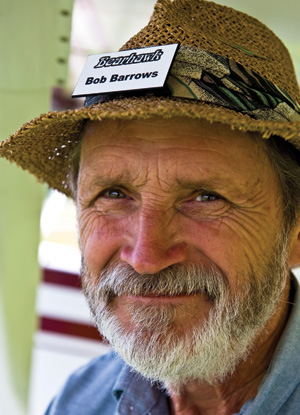
Bob Barrows, so says the hat: An accomplished designer with a strong engineering background.
Barrows Airfield turned out to be just what general aviation is all about, a grass strip, smooth enough for my 5.00×5 tires, with a row of open T hangars along one side. The office is in one of the hangar buildings and also serves as the engine shop. Some of the hangars contain aircraft such as a Pietenpol, a Bearhawk, a Bearhawk Patrol look-alike that will be an LSA, a few typical GA aircraft and of course the Bearhawk Patrol. The “facilities” consist of an out building with a crescent moon carved out of the door. It really didn’t look out of place.
When Is a Cub Not a Cub?
From a distance the Patrol looks like many other Super Cub type aircraft: high wing, tandem seating, taildragger. But up close the differences begin to appear. We have mentioned the metal wing with large, manually actuated flaps. The ailerons and flaps are fabric-covered, metal-frame designs, and the ailerons are dynamically and statically balanced. The airplane is well proportioned with an ample tail length, with well-sized vertical and horizontal tail surfaces that are aerodynamically balanced, and the elevator is also statically balanced. Barrows pointed out that the wing airfoil is quite different from the typical Cub. It’s a Riblett 30-413.5 airfoil cross section, and to his knowledge it hasn’t previously been used on an aircraft of this type.
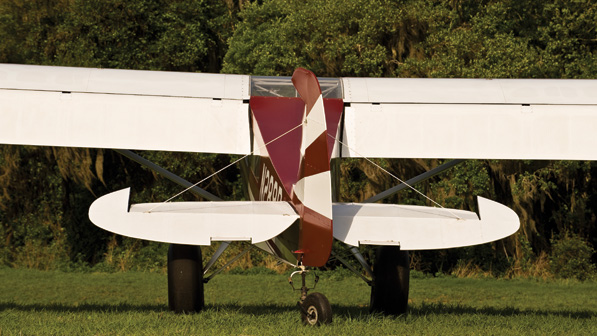
From the rear view, the Patrol’s large flaps are evident. With a high-tech Riblett airfoil, the Patrol gains exceptional low-speed handling.
The landing gear looks like the standard Cub arrangement; however, instead of bungees there are two spring/hydraulic damper devices similar in design to the original 7AC Champ shock struts.
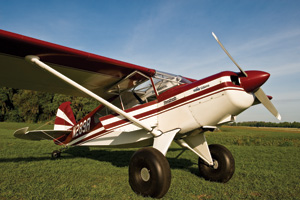
There’s plenty of prop clearance with the big tires; a constant-speed prop would improve takeoff and climb performance at the expense of weight and cost.
The fuselage and tail surfaces are fabric-covered 4130 steel frame construction. Boot cowl forward is metal. There is a generous amount of window area both forward and overhead, and side windows extend about two thirds of the way back to the tail. It stands to reason that a successful patroller has good viz.
Power to the Patrol
The engine in this prototype is an Engine Components, Inc. (ECI) OX-360, developing a claimed 185 horsepower at 2700 rpm, and the propeller is fixed-pitch metal. My first flight with Barrows had the aircraft fitted with the smaller 8.00×6 main tires. His field is at 1000 feet MSL; temperature was 65° F. We went out relatively light, at a gross weight of 1600 pounds, against the normal maximum gross of 2000 pounds. The Patrol has fuel tank capacity of 55 gallons, and we departed with 30 gallons on board. Our loading put us at 25% of MAC (mean aerodynamic chord), where the airplane has a range of 16% to 32%.
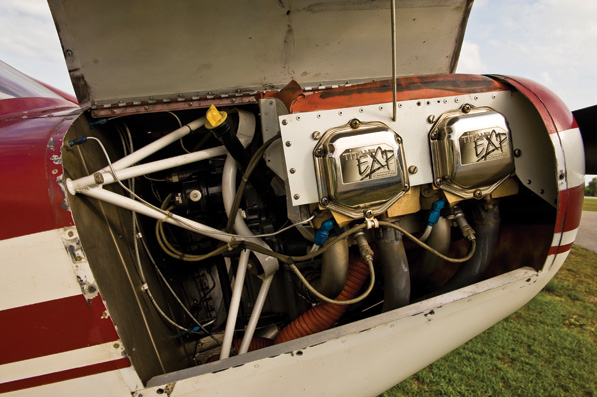
Power comes from an Engine Components OX-360, making 185 horsepower. Believe it or not, this engine bay can hold everything from an O-235 to the mighty 210-hp IO-390. Flip-open cowling is a treat.
Let’s think about those loading numbers for a moment. At the estimated empty weight of 950 pounds, you start, at best, with 1050 pounds to play with. Offset the full-fuel load (322 pounds), and you get 728 pounds for the cabin. A couple of 200-pound hunters could still carry a week’s worth of gear. Let’s now say the company is being optimistic and underestimates the empty weight by 20%. Even then, you have a full-fuel payload of 538 pounds! That’s not bad for a 2+2 aircraft, but it’s positively lavish for a two-place.
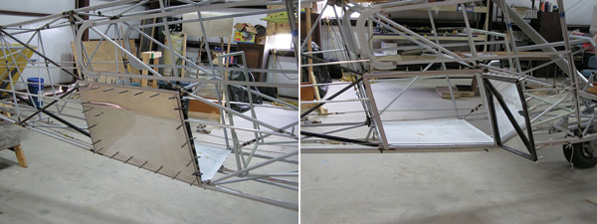
While not part of the prototype Patrol’s build, a baggage door, which opens to the area behind the back seat, will be standard. It measures 25×21 inches.
Payload doesn’t mean much, though, if you’re uncomfortable sitting there. In the Patrol, the cabin windows hinge at the top and open like a Cub’s; the door hinges at the front similar to a Champ. There is a sill to step over, and Barrows, with his long legs, had no trouble stepping up from the ground. I, however, had a lot of trouble, especially when he advised me not to use the seat back for support. I would have found a step beneficial (and perhaps a seat back one could grab with impunity).
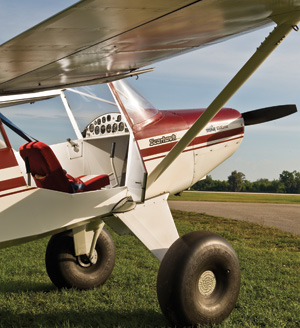
A combination swing-up window and swing-out door makes access easier than it would be in a Cub.
The seats are “ground adjustable” and Barrows kindly moved the front seat forward a few notches to accommodate my FAA standard 5-foot-11, 170-pound frame. Once you’re in the seat, the cabin seems impressively large. Listed as 32 inches wide, it quickly dispels any claustrophobic issues. The large windows offer excellent visibility from either seat, and the overhead window provided good visibility clearance in turns. There was ample headroom to accommodate tall pilots. I found with proper seat padding, there was good visibility over the nose for landing and ground operation.
Grab the Stick
A check for control friction showed none in the elevators, which are activated by pushrods, not the customary cables; there was little friction in the ailerons (operated by conventional cables) and normal friction in the rudder (also cable). Control motion was comfortable in all axes—that is, knees, seat and panel didn’t get in the way of the sticks, and control throw was reasonable.
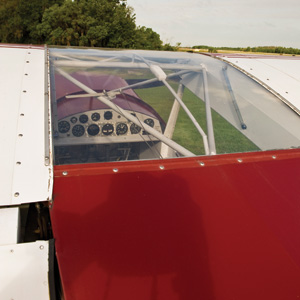
Let the sunshine in: The massive skylight improves overhead visibility and helps you keep that golf-course tan.
The prototype Patrol has no electrical system, so starting is done by hand. I looked on as Barrows conducted the successful start. We left the engine running for the subsequent three flights, but I suspect most builders will opt for a full electrical system.
Taxi is straightforward, tailwheel steering is effective, and the toe brakes are there when needed. We used the normal takeoff flap setting of 20°. Adding full throttle, the power response was immediate, and the acceleration was good. Some forward stick pressure raised the tail slightly for better acceleration, and rotation was at 40 mph IAS (indicated airspeed; all further speed references are IAS unless otherwise noted). We were airborne after 200 to 300 feet of roll. Heading and attitude control were easy to attain, and the overall pilot workload was low.
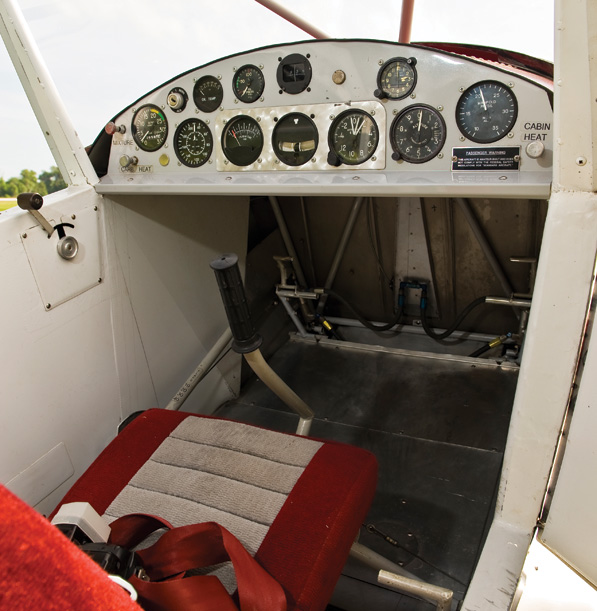
Befitting its utilitarian role, the Patrol’s instrument panel is not quite large enough for a budget-busting set of electronic instruments. There are those who believe the airplane is better for it.
Climb Away, Birdie!
Initial climb was established at 70 mph, the flaps were raised, and the Patrol accelerated to a 100-mph cruise climb. With the power set at 2500 rpm, the 100-mph climb provided good visibility all around, good engine cooling and a climb rate of about 2000 feet per minute.
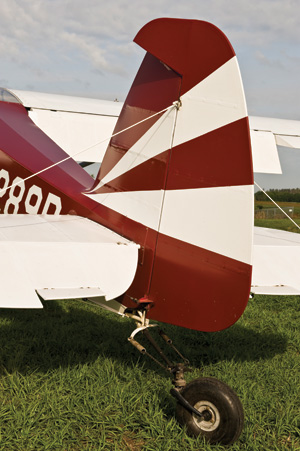
The braced fin and fully counterbalanced rudder provide good stability and more than ample control authority.
The Patrol has fixed rudder and aileron trim. The pitch trim lever (located on the overhead between the front and rear seats as you’d find in a Champ) provided good trim authority throughout the flight. Rudder trim was set for the cruise condition and some right rudder pressure was required during climb and slow-flight conditions. This is natural for most light aircraft and was no problem. Aileron trim was not missed in any flight conditions tested when using the “Both” fuel selector position.
Control harmony was nearly perfect with comfortably light roll forces (rare in this type of aircraft) and slightly higher pitch forces; the rudder forces were in the desired range. There was no noticeable friction in pitch or yaw, and light friction in roll.
So far, so good. Stick force per G was 3 to 4 pounds (good), and the stick force per velocity had a good positive gradient (stick force properly reflected speed deviations from trim). There was noticeable adverse yaw (uncommanded yaw with roll inputs), but it was easily controlled with aileron/rudder coordination.
Pitch static stability was good with a well-damped phugoid of a rather high frequency, which is what one would expect of an aircraft of this type and speed. A check of short-period frequency verified a high level of pitch static stability.
Yaw stability checks revealed a good level of dihedral effect (right roll with right rudder input, etc.), and rudder step inputs excited a Dutch roll mode of mid-frequency, well damped, and low roll-to-yaw ratio. For those of you whose eyes just glazed over, here’s the executive summary: All of this is good.
Roll static stability checks showed a neutral spiral mode (aircraft held bank angle hands off), and a well damped roll mode (very predictable bank angle selection). Piloting tasks of attitude, heading and airspeed control were easy to accomplish with little pilot compensation required for good performance.
Checking Speeds
Cruise testing was done at 2000 feet MSL where the outside air temp was 65° F. Throttle to 2350 rpm gave a modest 20 inches of manifold pressure with this propeller; call it around 53% power. Indicated airspeed was 135 mph, which calculated to 140 mph TAS. There was no GPS on board, and I didn’t bring one, so a calibration run was not feasible.
Visibility was excellent from both cockpits and enhanced by the overhead window. Trim ability, harmony and friction were essentially the same as in the climb. Stick force per G was about 6 pounds at this speed, and the speed stability gradients were slightly stronger than in the climb.
Adverse yaw was reduced from climb, and roll inputs required little rudder coordination. Pitch stability was strongly positive, and there was little change in the roll and yaw stability from the climb. Pilot tasks of maintaining heading, turns to heading, altitude and airspeed were of low workload with minimal pilot compensation required to achieve the desired performance, due in no small part to the light and responsive roll axis. In short, the Patrol is rock solid in cruise, and its light, responsive and predictable roll axis performance is seldom seen in aircraft of this type.
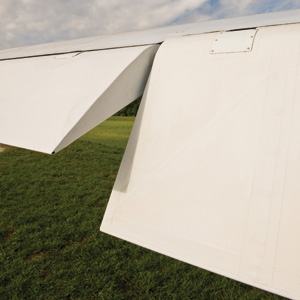
Generous flap angles help permit steep approaches and low stall speeds.
Stall Tactics
The unaccelerated stall occurred at approximately 39 mph with a straight-ahead break and reasonable warning. Accelerated stalls showed little tendency to roll off when the ball was held centered. Recovery techniques were normal, a simple reduction of back pressure.
Full pedal side slips were conducted at flap settings of 20°, 30° and 40°. The aircraft was quite controllable with no tendency to depart. Power-off unaccelerated stalls occurred at 35 to 40 mph (depending on the flap setting) with no tendency to roll off. Accelerated stalls, both right and left, also displayed no tendency to roll off. All recovery techniques were normal.
The descent was a non event and could be conducted at any airspeed up to Vne (never exceed speed). We used 120 mph, which provided a descent rate of 1500 fpm. Entering downwind and decelerating to less than 100 mph, flaps were lowered to 10°, slowing to 80 mph with 20° of flap at the abeam position. Arriving at the 90° position, the aircraft had slowed to 70 mph where 30° of flap were set. Rolling out on final, flaps were set to the maximum 40° position. Throughout the approach, power was used as required for airspeed and altitude control and was generally under 1500 rpm.
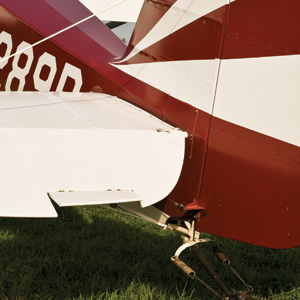
A simple inset tab on each elevator handles elevator trim.
As before, trim ability and control harmony remained good throughout speed and configuration changes, and the forward visibility was excellent due to the lower pitch attitude resulting from the full flap setting. Pitch changes with flap positioning were easily controlled, and the desired aircraft performance required little pilot compensation. This is a nice airplane in the approach, though it does require flaps to slow down and achieve a desirable glide path. We slowed to 60 mph on final and to 50 mph over the threshold. Pilot tasks continued to require minimal compensation. Forward visibility was good during the flare from either seat, and I wouldn’t hesitate to instruct from the rear seat.
Pilot workload remained low even during the final flare and touchdown. Touchdown occurred at just under 40 mph. The landing gear showed its true colors at touchdown by smoothly absorbing the impact and sticking to the ground with no bounce. Very nice.
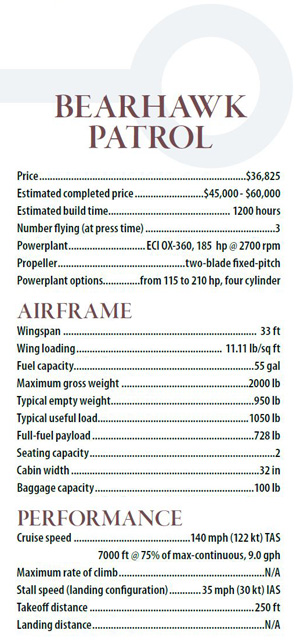
Specifications are manufacturer’s estimates and are based on the configuration of the demonstrator aircraft. As they say, your mileage may vary.
Big Wheel Keep on Turning
I had the opportunity to fly the Patrol later on the 30-inch “tundra” tires. For the most part, the airplane behaved as before, with a few notable exceptions.
The difficulty of cabin entry with 8.00×6 tires was repeated in spades for this gear configuration. A big step would be nice. During taxi, a smooth, floating ride was possible in areas where I wouldn’t attempt to taxi with normal tires. Every pilot should experience this feeling at least once. The double puck brakes used on the Patrol provided adequate braking with the larger tires for both taxi and landing rollout modes.
I tried to duplicate the cruise conditions from the previous flight, but could not. To find smooth air, the cruise tests were conducted at 5000 feet MSL, and OAT was 60° F. Setting the power at 18 inches MP/2500 rpm produced about 56% power. The steady-state cruise speed was 120 mph IAS, which calculated to 135 mph TAS. A rough normalization of these, and the figures of 140 mph TAS with 53% power at 2000 feet MSL of the previous flight, resulted in a TAS reduction of between 7 and 10 mph TAS.
Consequently, 30-inch tundra tires allow the Patrol to operate from rough terrain at a cost of about 10 mph in cruise speed and, I must add, about $3000.
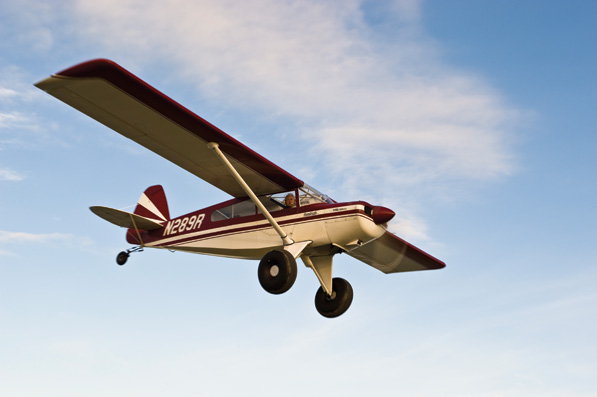
Overall Impressions
With either set of wheels, the Patrol is thoughtfully designed and well-constructed with excellent flying qualities. It handles more like an RV than a high-wing bush plane. It attains excellent short/rough field performance, and yet achieves impressive cruise speeds even with 30-inch tundra tires. Good flying qualities don’t just happen; they must be a serious design goal. It’s obvious that Barrows understands this. The Patrol has a level of flying qualities that I haven’t seen matched in an aircraft in its class.
I suspect one of the reasons that the Patrol performance and flying qualities are a cut above the others is the wing airfoil design. Most other aircraft of this type have good low-speed performance, though some require kluges such as vortex generators, aileron spades or other such items to achieve the desired control at the low end. (One man’s solution is another man’s kluge; call me a purist if you must.) It wasn’t possible to evaluate the Patrol in crosswinds or turbulence, but the demonstrated flying qualities lead me to suspect that there would be no big problems in those areas.
Room for Improvement?
Electrical systems, avionics and entry steps are practical builder options. I doubt they would significantly affect overall performance due to a solid CG control and light wing loading combined with good power-to-weight ratio.
A constant-speed prop seems like a natural addition, and Barrows is considering it. Takeoff and climb performance would be improved significantly for high-altitude operations. Cruise performance at higher altitudes would be improved while achieving a lower fuel burn due to the ability to use higher manifold pressures and lower rpm settings. Glideslope control would be more positive due to the added drag of lower blade angles in the approach.
As is, there’s not much to complain about. Performance is good for the mission, and handling qualities are well above the standard for the category. I haven’t felt this good about an airplane since the RV-10 prototype.
For more information, call 877/528-4776 or visit www.bearhawkaircraft.com.
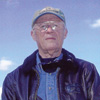
![]()
Chuck Berthe is a retired Naval Aviator, civilian Test Pilot, and Aeronautical Engineer with ATP, CIFI, Helo, A&P ratings, and two Repairman Certificates. He has logged 16,600 pilot hours, and is an Associate Fellow in the Society of Experimental Test Pilots.

